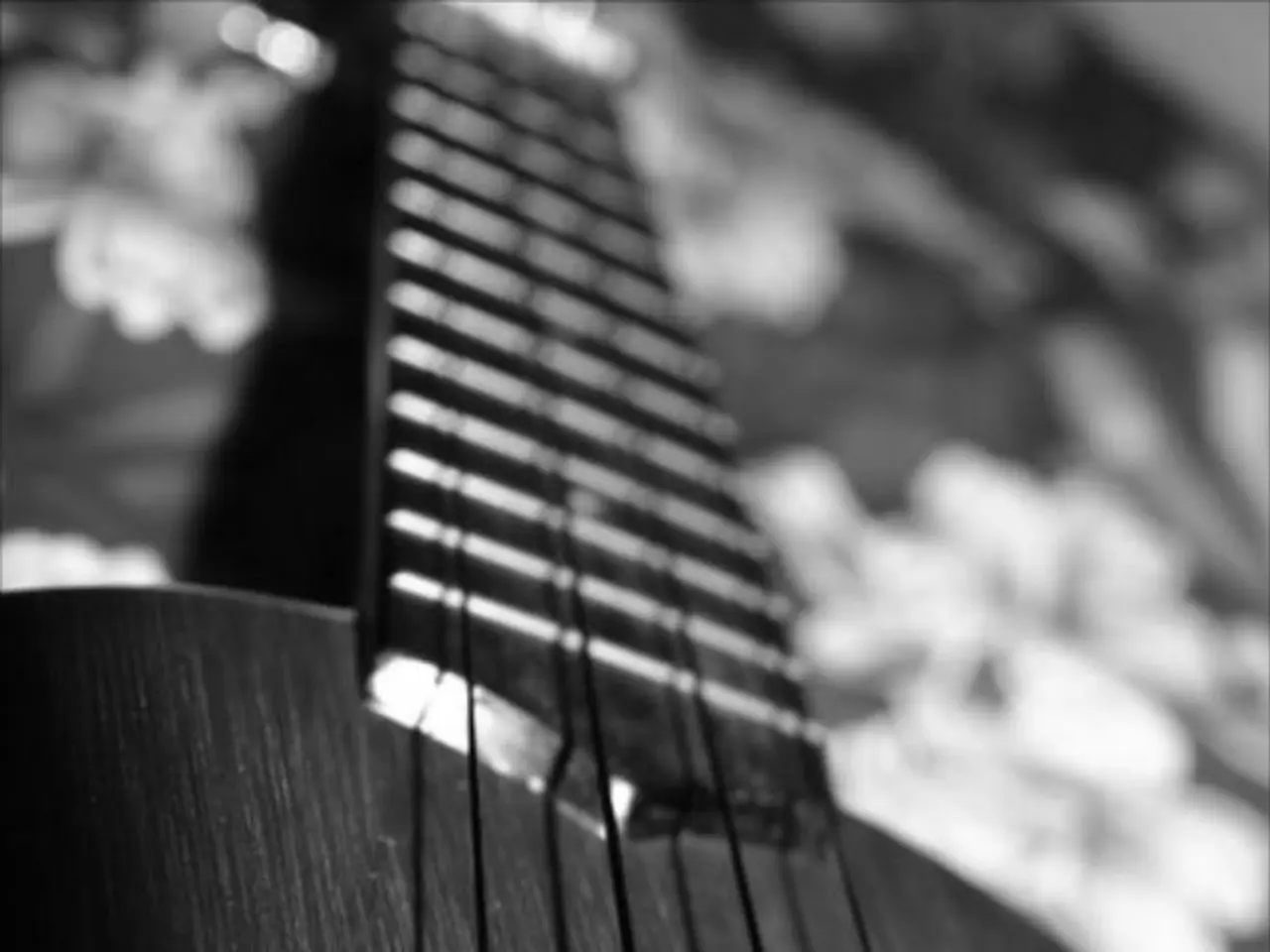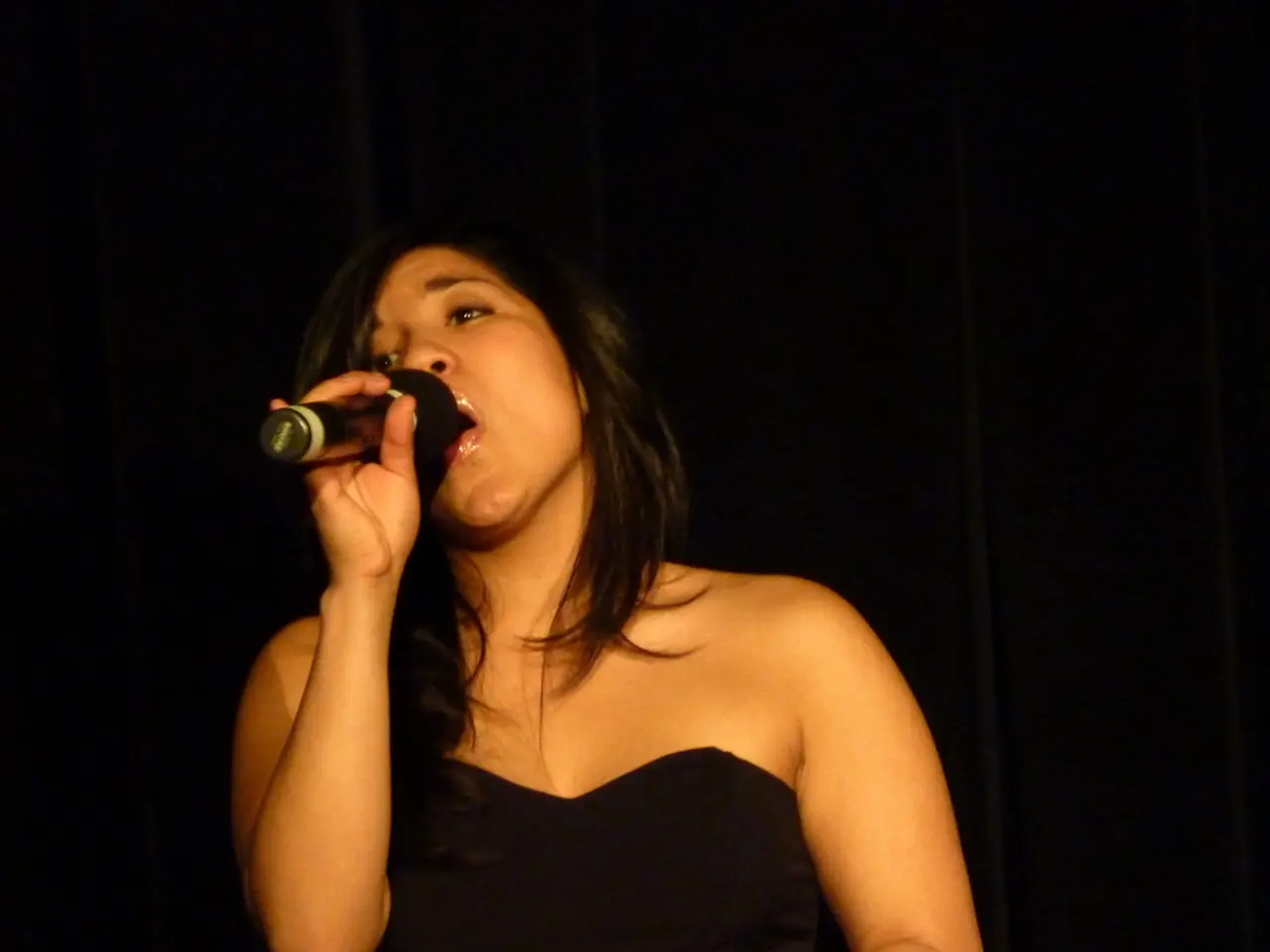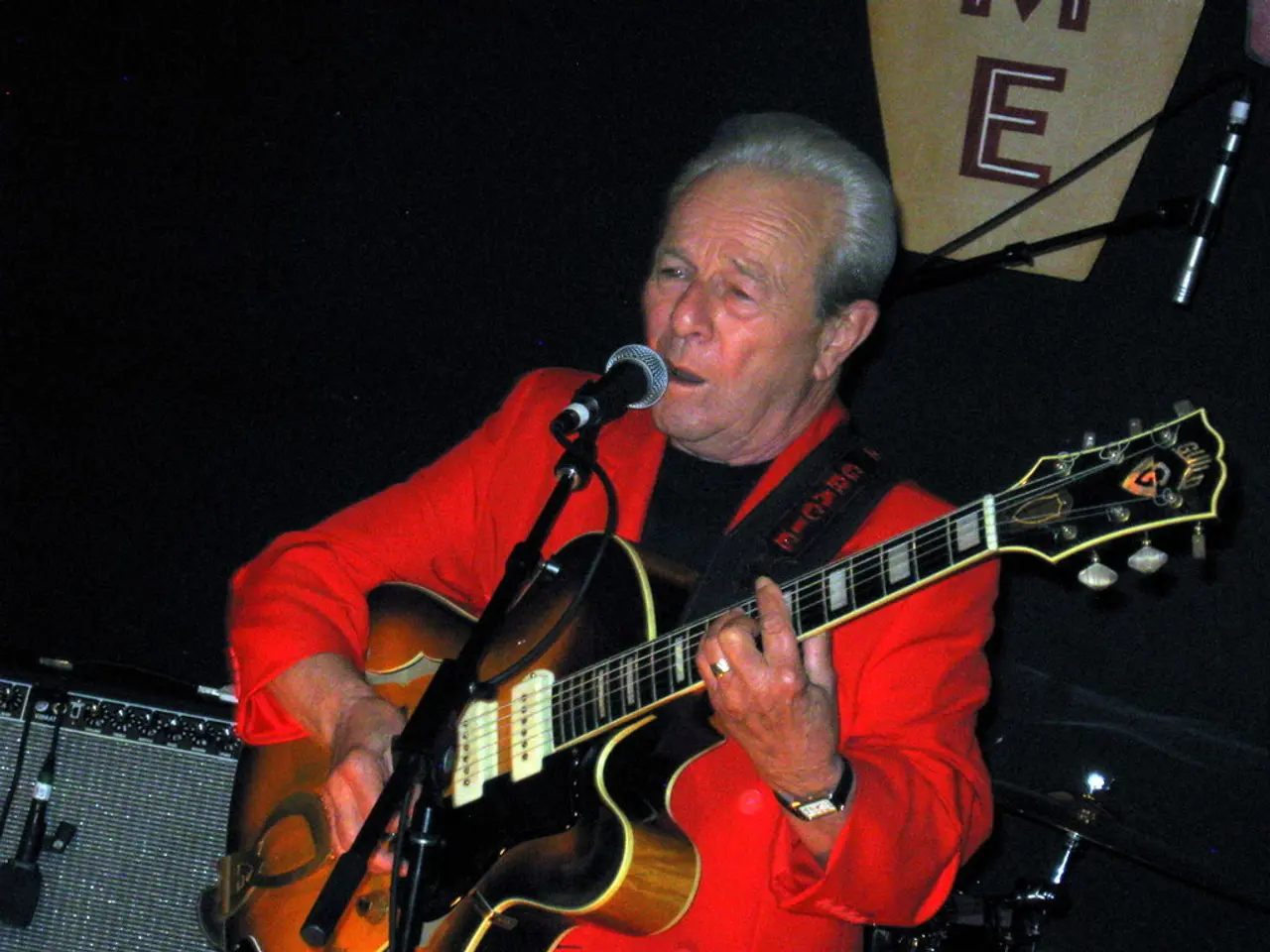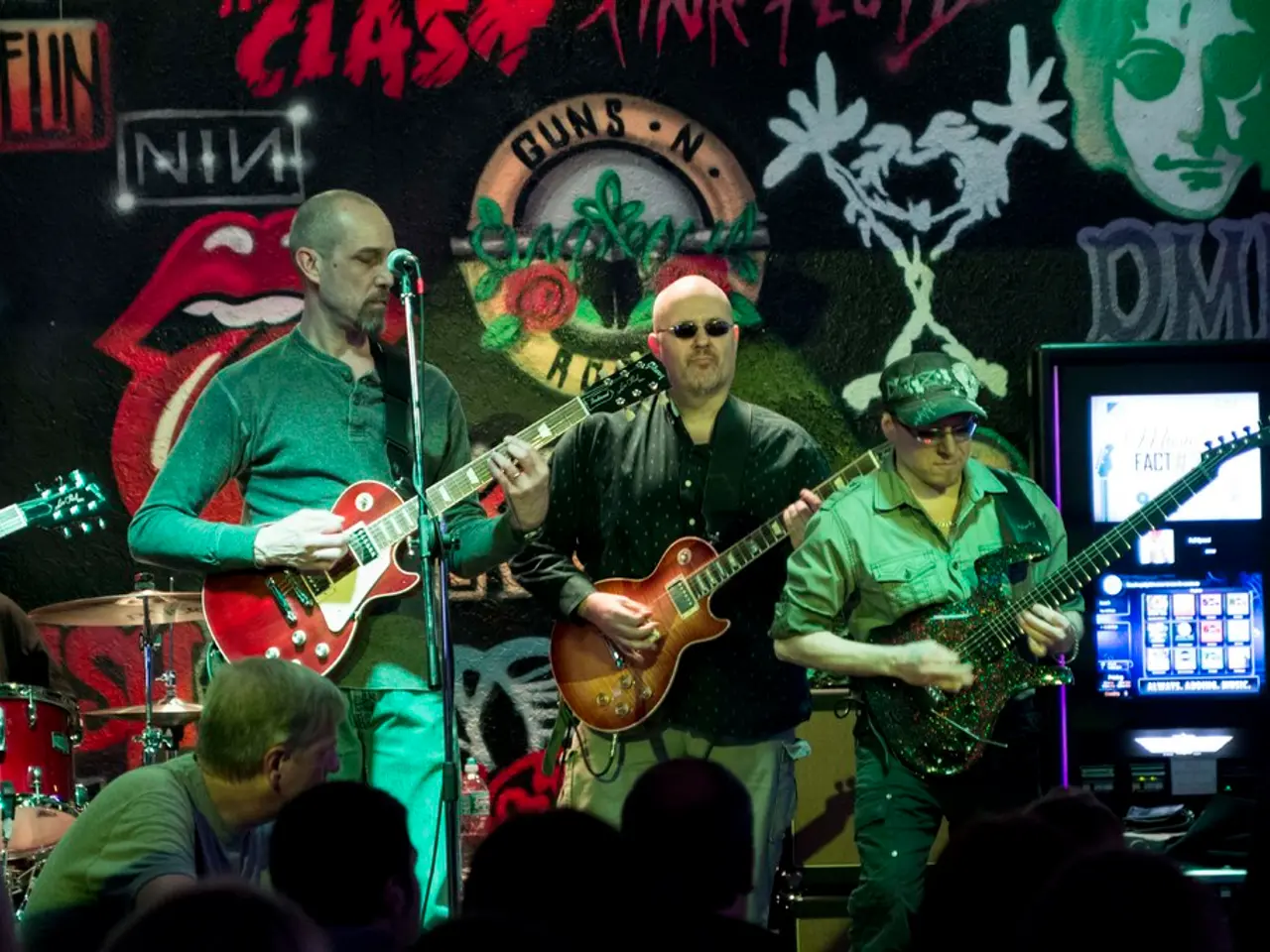Exploring the Fusion of Romantic and Classical Styles in Music: A Look at Impressionism vs Neoclassicism
=====================================================================
In the late 19th century, a new era in music emerged, marked by the works of Claude Debussy and Maurice Ravel. This movement, known as Impressionism, represented a departure from the emotional intensity and dramatic contrasts of Romantic music, aiming instead to evoke atmosphere, mood, and fleeting impressions [1].
Debussy's music is characterized by its use of non-traditional scales (such as the whole tone scale), ambiguous harmonies, and a focus on tone color and texture over formal structure. His compositions often create a dreamlike or atmospheric effect, a musical parallel to Impressionist painting, which captures the transient effects of light and mood rather than precise detail [2][3].
Ravel, influenced by Debussy but maintaining his own distinctive style, also employed innovative harmonies, modal melodies, and rich orchestration to evoke colorful soundscapes and subtle emotional nuances. Both composers contributed to shifting Western music away from Romantic expressiveness toward a more nuanced palette of sonic impressions [3][4].
The name “Impressionist music” itself draws from the Impressionist art movement in France during the late 19th century, which emphasized capturing the impression or sensation of a moment, particularly through light and color, rather than realistic representation [1][5]. This cross-disciplinary inspiration encouraged composers like Debussy and Ravel to focus on mood, atmosphere, and innovative harmonic language in their music.
Key Contributions
| Aspect | Claude Debussy | Maurice Ravel | |--------------------------|----------------------------------------------------|---------------------------------------------------| | Harmonic Language | Use of whole tone scales, modal harmonies, parallel chords, ambiguous tonality | Innovative modal and chromatic harmonies, clear textures | | Musical Texture & Color | Emphasis on tone colors and textures to create atmosphere | Rich orchestration with vivid instrumental colors | | Formal Elements | Fluid forms that evade traditional structure | More classical clarity but embracing Impressionist aesthetics | | Influence | Bridged Impressionism to modernism and film music | Developed Impressionist language with personal refinement |
Debussy and Ravel's work marked a major turning point in music, leading to the transition from mainstream classical to jazz and a wide range of other music [4]. The influence of their music extended beyond Impressionism, with composers like Vaughan Williams adopting a similar style, and their ideas finding their way into popular Anime movies from Japan [5].
Ravel's technical style was linked to Liszt, while Debussy's musicality was closer to Chopin. Ravel's music, such as Jeux d'eau, Ondine, and Une Barque Sur I'Ocean, featured innovative pedal effects to create watery sounds [6]. Debussy, on the other hand, drew inspiration from artists such as Monet, Pissarro, and Renoir, and aimed to create music that evoked landscapes rather than being emotionally charged [7].
Even as Debussy disliked being classified as an impressionist composer, his music incorporated elements such as pentatonic scales, whole tone scales, and older modes [8]. His musical influences included Gounod, Massenet, Russian composers like Tchaikovsky, Balakirev, and Rimsky-Korsakov [9]. Ravel, a student of Debussy, continued the style of music known as Neoclassicism, and his works such as Feria, Daphnes et Chloe and Ma mère l'Oye, reflect this influence [6].
In conclusion, Debussy and Ravel significantly shaped Impressionist music, moving it away from Romantic emotionality toward subtle sensory impressions and new harmonic horizons, leaving an enduring legacy on 20th-century music and beyond [2][3][4].
References:
[1] "Impressionist Music." Encyclopædia Britannica, Encyclopædia Britannica, Inc., 15 Mar. 2019, www.britannica.com/art/Impressionist-music.
[2] "Claude Debussy." Encyclopædia Britannica, Encyclopædia Britannica, Inc., 15 Mar. 2019, www.britannica.com/biography/Claude-Debussy.
[3] "Maurice Ravel." Encyclopædia Britannica, Encyclopædia Britannica, Inc., 15 Mar. 2019, www.britannica.com/biography/Maurice-Ravel.
[4] "Impressionism." Oxford Music Online, Oxford University Press, www.oxfordmusiconline.com/subscriber/article/grove/music/01177.
[5] "Impressionism and Anime." Anime News Network, www.animenewsnetwork.com/feature/2015-02-12/impressionism-and-anime.
[6] "Ravel, Maurice." Grove Music Online, Oxford Music Online, www.oxfordmusiconline.com/subscriber/article/grove/music/01381.
[7] "Debussy, Claude." Grove Music Online, Oxford Music Online, www.oxfordmusiconline.com/subscriber/article/grove/music/01230.
[8] "Debussy, Claude - Harmony." Grove Music Online, Oxford Music Online, www.oxfordmusiconline.com/subscriber/article/grove/music/02420.
[9] "Debussy, Claude - Influences." Grove Music Online, Oxford Music Online, www.oxfordmusiconline.com/subscriber/article/grove/music/04276.
Composer Claude Debussy's use of non-traditional scales and ambiguous harmonies contributed to the entertainment of mood and atmosphere in his music, a characteristic that reflects the Impressionist art movement's focus on capturing transient effects and impressions.
Maurice Ravel's music, with its innovative harmonies, modal melodies, and rich orchestration, extended the Impressionist palette of sonic impressions and found influence in popular Anime movies from Japan, showing how the works of these composers helped shape a new era in music and entertainment.





